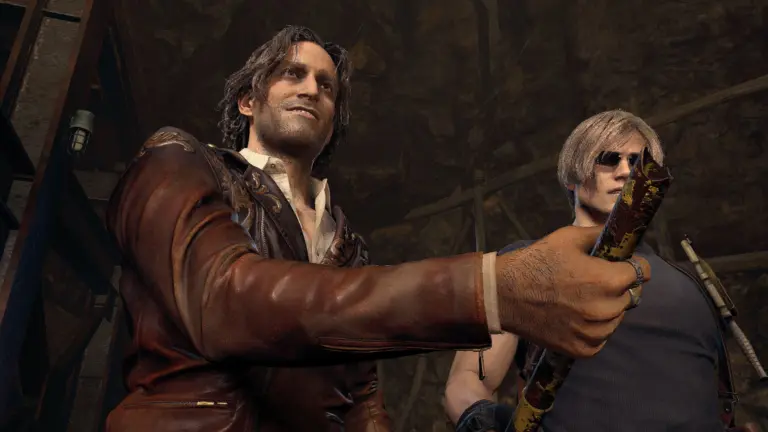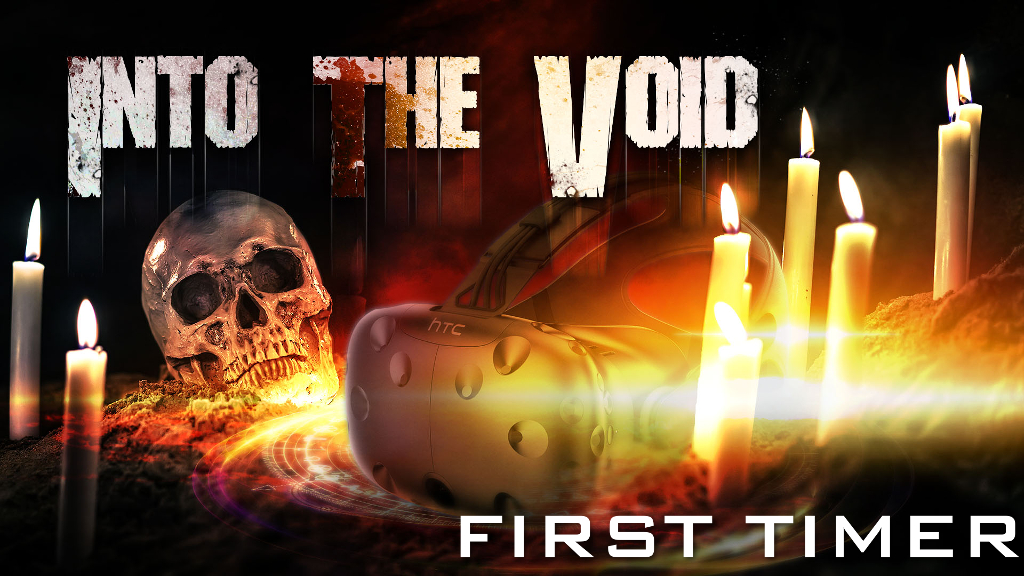
It’s so exciting to finally be able to write an entry in this series, which I supported in the past with our previous lead VR editor Tom Sandford. After years of waiting and sitting on the sidelines, watching for decent sales and for the tech to reach mainstream adoption, I now have a VR headset. I managed to snag an HTC Vive Pro for a pretty good price (my wallet hurts regardless, though). As such, I can now ensure VR horror has a voice on this site, as we’ve struggled in the past to give these types of horror games much attention — simply because most of us couldn’t play them.
As someone that’s written about horror games for nine years, it’s a somber fact that many of them just don’t scare me anymore. That fear I used to feel as a kid playing horror games like the original Resident Evil or Silent Hill escaped me. I long for games that actively make me want to stop playing out of discomfort — I’m sure that makes sense to most of our readers. The immersive elements of VR immediately stuck out to me as a potential way to restore my susceptibility to fear. So for my first entry in the series, I’m writing about my first handful of VR horror experiences and what stood out about them.
Organ Quarter
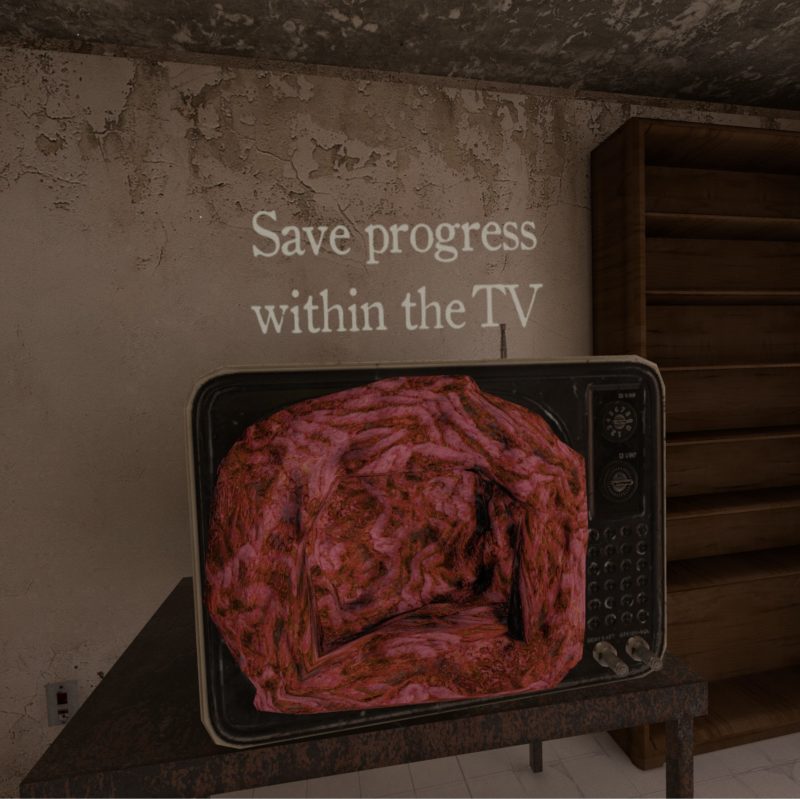
Organ Quarter billed itself as a true survival horror game for VR, with a classically styled design to puzzles, a disempowered protagonist, and limited resources. Conceptually, the game is a mash of David Cronenberg’s fascination with the perversion of flesh, the inexpensive yet effective horror effects David Lynch seems to love, and the game design of a PS2-era title like Silent Hill 2. It doesn’t look like much at first glance, but Organ Quarter was among one of the first narrative-focused VR horror games that I played that felt like an evolution of a genre I’m intimately familiar with.
The game starts in an oppressive-looking apartment complex set within the organ quarter, a surreal urban district that pairs desolation with the sense of a corrupting presence. Is it a dream? Are we just in another reality? I don’t know yet, but it’s an uncomfortable place. One of the first things you’re required to do is learning to save; this requires putting your head into a fleshy hole inside of a TV. Videodrome fans will appreciate that one.
The few hours that I played had me explore various apartments in search of key items needed to progress through other parts of the building. Wandering down the halls of this place spurred a sense of loneliness, as my spatial awareness was at an all-time high having played so few VR games until that point. Excellent sound design made this space feel physically empty. Putting my back to a wall to examine my map and gather my thoughts felt natural. Exhaustion from playing set in, in part from the physicality of performing and in part from pure stress.
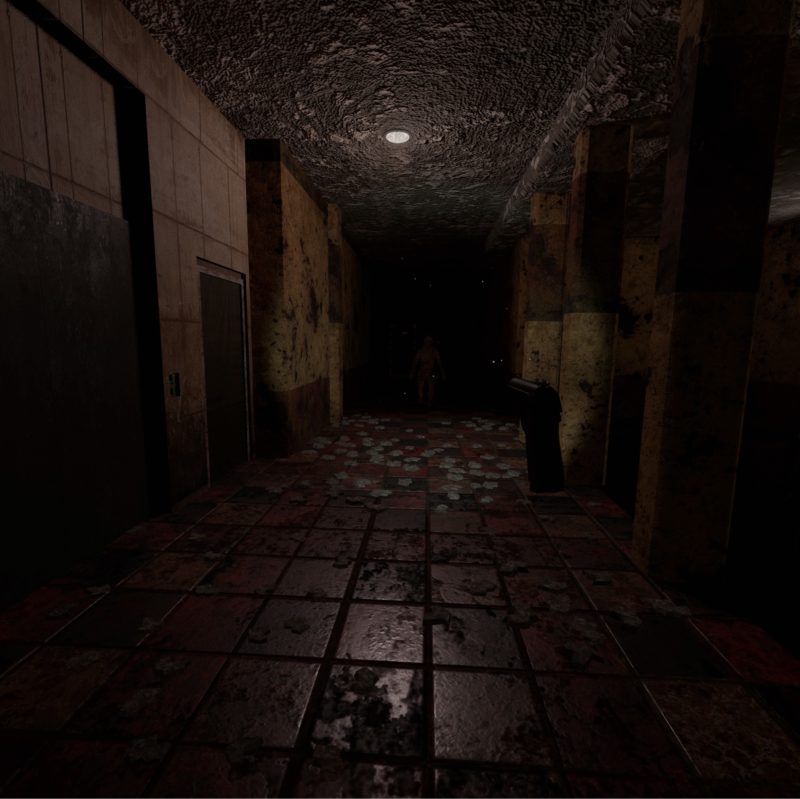
Standing play of Organ Quarter introduced me to an interesting sensation: a heightened sense of vulnerability. Sitting down while in VR is, of course, still more immersive than looking at a 2D screen, but standing up exposes your entire body. You’re reminded that you’re engaged in a calculated act of balance that you learned as an infant; even if you’re composed and self-aware enough not to run out of your playspace while strapped into VR, your body begins to betray you.
The few creatures that I encountered naturally made me inclined to peek around corners before progressing further. As new enemy types appeared, some affixed to ceilings, every corner needed examination. This carries to the resource aspect of survival horror as well. As my ammo dwindled, I had to desperately search for extra boxes while on my knees, looking under beds and behind furniture. Organ Quarter’s developers award those willing to grovel.
I look forward to playing more Organ Quarter; out of all of the VR horror games that I played, it really did feel most like a classically-inspired survival horror game adapted to VR. It also goes to show that high-fidelity visuals are not necessary to evoke fear. The abundance of concrete and fleshy textures didn’t need to be photorealistic to trick me into feeling immersed. If anything, this decreased sense of realism makes the world all the more alien. It may be a bit late, but I intend to give this one a proper review as soon as I can.
Arizona Sunshine
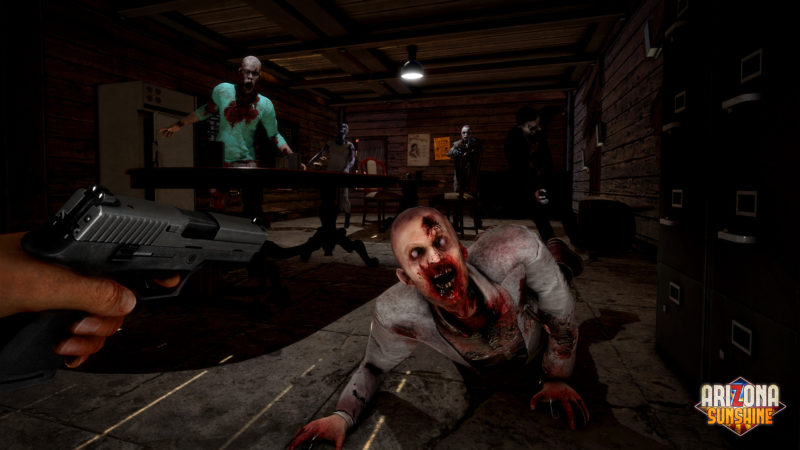
You can’t go too far on any platform without a quality zombie game. Arizona Sunshine stands out as one of the more notable full-length story-based VR games out there, featuring a campaign and co-op play. I’m not too far into this one, but Arizona Sunshine introduced me to a different element of VR-based fear — panic. While not as fast-paced as Killing Floor: Incursion (more on that game later), Arizona Sunshine mixes up enemy encounters with slow and fast-moving zombies, tricking me into fluctuating the degree of my defenses.
Gun-based VR games are, admittedly, really satisfying. I have no interest in owning a gun in real life, but man does it feel good to have a reliable weapon when the shit hits the fan. Arizona Sunshine makes use of the belt-based inventory system found in a few VR games. Reaching down to unholster a gun when needed feels empowering — as does a well-timed headshot. But all semblance of badassery doesn’t last long when surrounded by zombies. When panic strikes, I’m all butterfingers — dropping magazines (which are limited!) and my guns, left fiddling around on the floor like Velma in Scooby Doo. It’s pathetic and hilarious.
Arizona Sunshine may likely be one of the least scary games on my list — I’ll have to keep playing, but it’s fun. I’m sure it’s even better with a buddy. Regrettably, I have few friends to share co-op VR games with. Alas, that’s a common thread with VR overall; too few have made the plunge yet.
Arizona Sunshine has stiff competition, though, when it comes to co-operative VR zombie shooters…
Killing Floor: Incursion
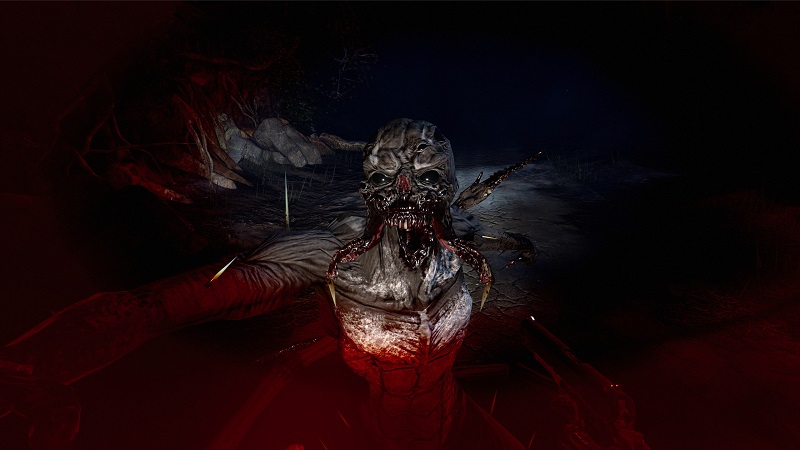
When people think of Killing Floor, they purely think of multiplayer. Between the two mainline games, there’s context given to the ZED outbreak, but there’s no campaign. Incursion’s story mode introduces players to the source of the epidemic, the Horzine corporation. Horzine is very much this universe’s Aperture Science, and it’s no wonder the world is in disarray because of their actions. But despite the surprising level of humor in the game’s story, Incursion is even more panic-inducing than Arizona Sunshine.
If you’ve played either Killing Floor or its sequel, you’re familiar with the core premise: you and a group of friends enter a map and survive multiple waves of ZEDs. Enemy counts can get pretty high, and these creatures move quickly. In Incursion, imagine waves coming at you up close. In the dark. Quietly. I would have never expected a Killing Floor game to be legit scary, but here we are. The inclusion of ZEDtime — some wonderful “VWOOM” slow-motion moments — fits exceptionally well in VR and is also immensely satisfying.
Part of me might almost be too afraid to go at this one alone. I’m going to have to convince Destiny to load up her copy so we can play some co-op.
The Exorcist: Legion VR
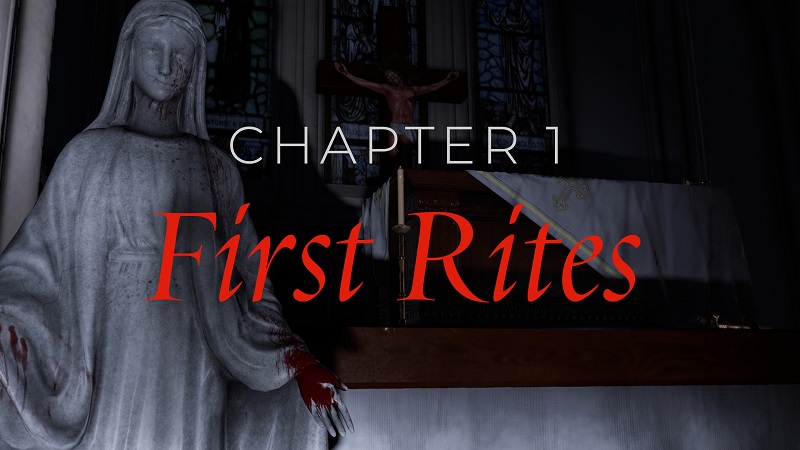
This is what I’m talking about, kids. The Exorcist: Legion VR combines realistic visuals, virtual reality, and one of the horror genre’s most significant icons into an experience that had me holding a fake cross with shaky hands while screaming at demons. Legion VR is an episodic title that puts you in the role of a Boston police officer on a case of explained murders connected by supernatural happenings. The Exorcist film’s original antagonist, Pazuzu, is back and has brought along some friends. The demon Legion prefers a larger audience for its theatrics, as opposed to painting a child’s bedroom in vomit. In the game’s first episode, that included some genuinely frightening moments.
While high-fidelity graphics aren’t necessarily needed for VR to immerse players successfully, Legion VR’s visuals and lighting are top notch and very effective. The game’s first episode sends the protagonist to a shrouded murder scene in a church. You’d think the police would bring more than a few portable lamps to examine the area, but budget cuts I guess. The starting area is set in front of the stage and podium, with the light illuminating it only enough to make out a life-size crucified Jesus against the back wall. To the right, a confession booth surrounded by evidence markers. At this point, I expected jump scares at any point — a scare tactic I’m not a fan of, but in VR undoubtedly a tactic that would be hard to ignore.
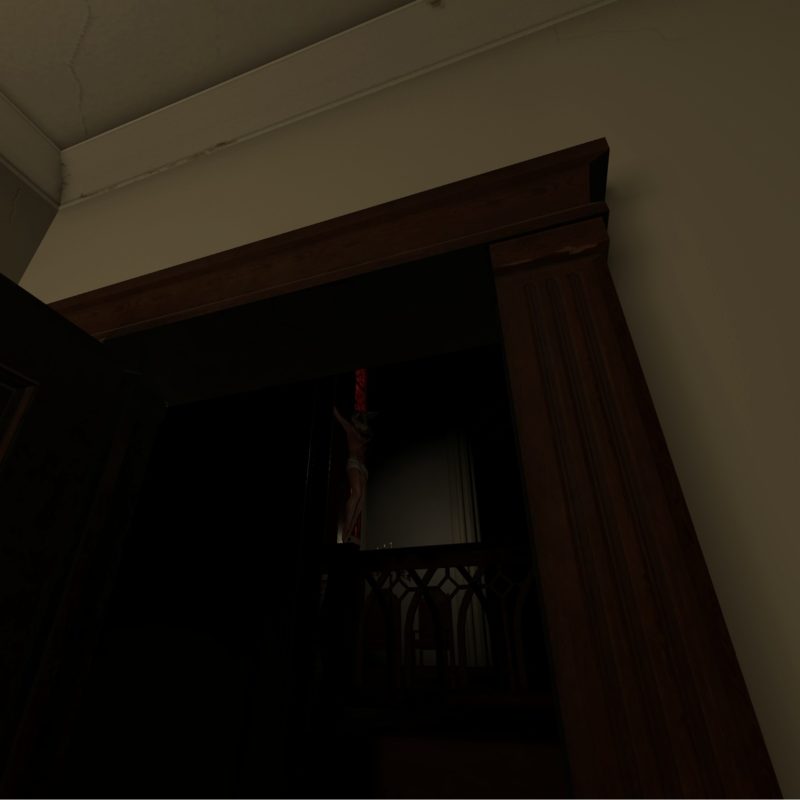
Fast forward through my investigation, and the real terrors started. That once divine image of Christ soon bore the head of a pig. The crime scene feel into further disarray, and the statue of sweet Mother Mary somehow found itself behind me on the opposite side of the room. Shit. The game had me fumble through a toolkit of exorcism items — holy water, salt spray, and a cross — as a series of haunted house attractions converged around me. I nervously tossed a vial of holy water with all of the force of flick — it didn’t work. Perhaps it was because I was raised Catholic (partially), but holding the cross toward the terrors felt sensible and desperately comforting. Suddenly Pig Jesus was no longer on his crucifix. Past the pews, toward the entrance of the church, two red eyes appeared. Legion had arrived, and I had no idea what to do.
The first episode of The Exorcist: Legion VR, upon reflection, was pretty short. It might benefit developer Wolf & Wood Interactive to offer it as a free demo because after just getting a taste of what they were capable of with VR horror, I purchased each subsequent episode. The other VR games on this list all induced a level of fear that escapes me with most horror games that I play, and Legion VR tops the list (for now).
Honorable Mention: Skyrim VR
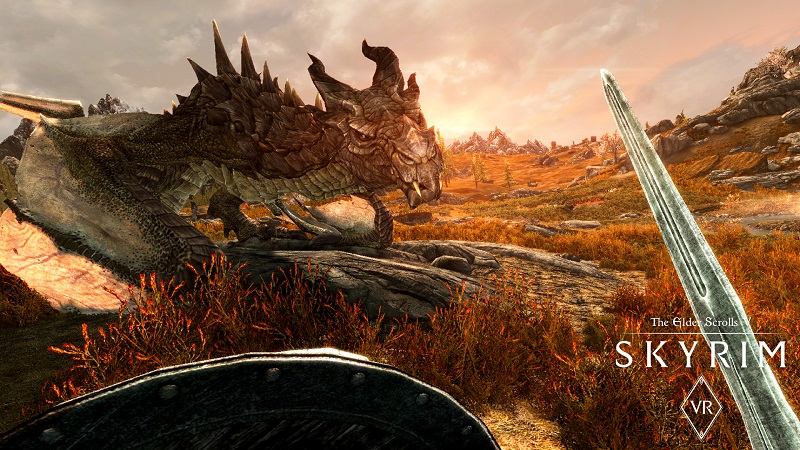
Skyrim will be released on every platform imaginable until The Elder Scrolls VI comes out, so of course, Bethesda would port it to VR. As for why this game deserves mention here, let me tell you.
Those who have played Skyrim are aware that it has its fair share of horror elements, but overall it’s not designed to scare you as a horror game does. With the jump to VR, though, the game’s slower more challenging moments can become unnerving — this is aided by mods almost entirely. Improving the game’s lighting system and visuals turns drab dungeons or crypts into ominous settings. Torches gain a purpose when the lighting is more realistic. Dedicating one hand to the torch to light the way limits combat options, encouraging more cautious play.
I haven’t made a lot of progress on my Skyrim VR save, but I am excited to see just how past experiences have changed for the better. Dragon fights, vampire quests, the Dark Brotherhood, and endless dungeons. I suspect I’m going to play this game as a bad guy finally, and I’m not sure if because it’s now more immersive if that’s a good thing …
–
Have any ideas or comments about what I should try next? Let me know in the comments! I’ve officially designated myself the VR dude for Rely on Horror now, so let’s explore this new era of gaming together.


